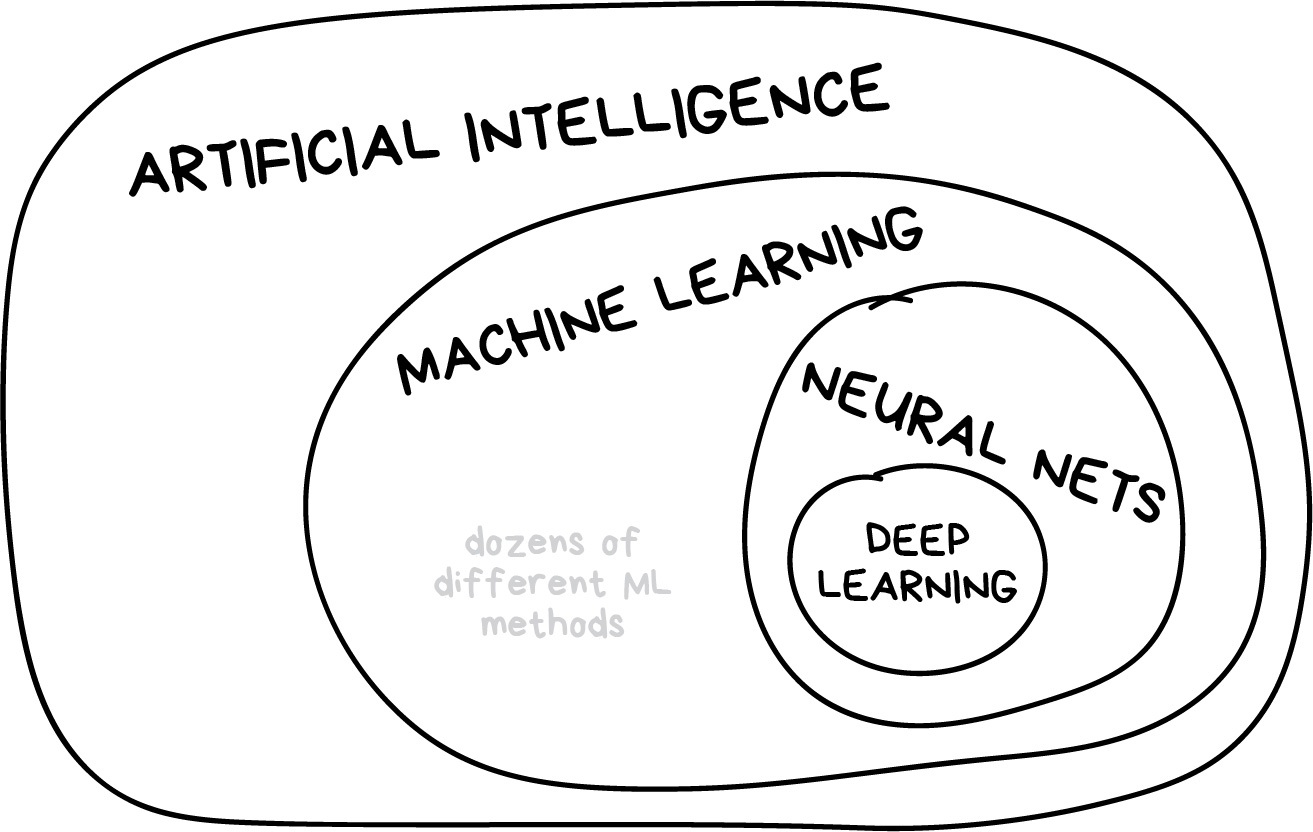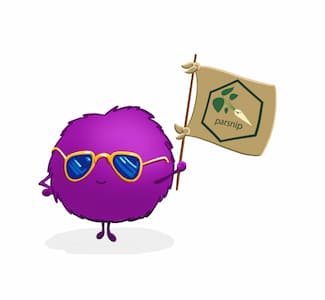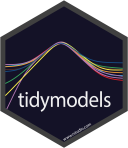flowchart TB au[Aprendizaje\nAutomático\nClásico] sp[Supervisada] au--Datos numéricos o categóricos-->sp us[No supervisada] au--Datos no están clasificados-->us cl[Clasificación] sp--Predice categoría-->cl rs[Regresión] sp--Predice numero-->rs ag[Agrupación] us--Divide por similitudes-->ag rd[Reducción\n de dimensiones] us--Busca dependencias\nescondidas-->rd as[Asociación] us--Identifica secuencias-->as
1 - Introducción
Introducciendo Tidymodels
¡Bienvenidos!
Nombre de la red Wi-Fi
TODO-ADD-LATER
Contraseña de la red Wi-Fi
TODO-ADD-LATER
Normas del taller
- Código de conducta:
TODO-ADD-LATER
Quien eres?
Sabe utilizar la “pipa” de magritr (
%>%) o R (|>)Conoce las funciones de dplyr, tidyr y ggplot2
Entiende conceptos estadísticos básicos
No necesitará ser experto en modelaje o aprendizaje automático
El equipo Tidymodels
- Simon Couch
- Hannah Frick
- Emil Hvitfeldt
- Max Kuhn
Agradecimientos especiales para: Davis Vaughan, Julia Silge, David Robinson, Julie Jung, Alison Hill y Desirée De Leon
👀
Que planeamos hacer en este taller
- Tu presupuesto de datos
- Las partes de un modelo
- Evaluar modelos
- Afinar modelos
Salude a sus vecinos 👋
¿Que es aprendizaje automático?

¿Que es aprendizaje automático?

- ¿Este es tu sistema para aprendizaje automático?
- Sí, le tiramos los datos a este monton de algebra linear, y después tomamos las repuestas que salen
- ¿Y si las respuestas están equivocadas?
- Lo empezamos a mezclar hasta que algo se ve como correcto
¿Que es aprendizaje automático?

¿Que es aprendizaje automático?
Tu turno

¿Como se relacionan las estadísticas y el aprendizaje automático?
¿Como se parecen? ¿Cuales son sus diferencias?
03:00
¿Que es Tidymodels? ![]()
library(tidymodels)
#> ── Attaching packages ──────────────────────────── tidymodels 1.1.1 ──
#> ✔ broom 1.0.5 ✔ rsample 1.2.0
#> ✔ dials 1.2.1 ✔ tibble 3.2.1
#> ✔ dplyr 1.1.4 ✔ tidyr 1.3.1
#> ✔ infer 1.0.6 ✔ tune 1.1.2
#> ✔ modeldata 1.3.0 ✔ workflows 1.1.4
#> ✔ parsnip 1.2.0 ✔ workflowsets 1.0.1
#> ✔ purrr 1.0.2 ✔ yardstick 1.3.0
#> ✔ recipes 1.0.10
#> ── Conflicts ─────────────────────────────── tidymodels_conflicts() ──
#> ✖ purrr::discard() masks scales::discard()
#> ✖ dplyr::filter() masks stats::filter()
#> ✖ dplyr::lag() masks stats::lag()
#> ✖ recipes::step() masks stats::step()
#> • Learn how to get started at https://www.tidymodels.org/start/Expectativas del taller
- El “mapa” de hoy
- Procesos básicos de los modelos predictivos
- Ver la ingenieria de caraterísticas (feature engineering) y afinamiento como extenciones cíclicas
Expectativas del taller
flowchart LR ad[Todos\nlos datos] style ad fill:#fff,stroke:#666,color:#000 tr[Entrenamiento] style tr fill:#FBE9BF,stroke:#666,color:#000 ts[Prueba] style ts fill:#E5E7FD,stroke:#666,color:#000 ad --> tr ad --> ts
Expectativas del taller
flowchart LR ad[Todos\nlos datos] style ad fill:#fff,stroke:#666,color:#000 tr[Entrenamiento] style tr fill:#FBE9BF,stroke:#666,color:#000 ts[Prueba] style ts fill:#E5E7FD,stroke:#666,color:#000 ad --> tr ad --> ts dt[Arbol de\nDecisión] style dt fill:#FDF4E3,stroke:#666,color:#000 tr --> dt
Expectativas del taller
flowchart LR ad[Todos\nlos datos] style ad fill:#fff,stroke:#666,color:#000 tr[Entrenamiento] style tr fill:#FBE9BF,stroke:#666,color:#000 ts[Prueba] style ts fill:#E5E7FD,stroke:#666,color:#000 ad --> tr ad --> ts lg[Regresión\nlogística] style lg fill:#FDF4E3,stroke:#666,color:#000 tr --> lg dt[Arbol de\nDecisión] style dt fill:#FDF4E3,stroke:#666,color:#000 tr --> dt rf[Bosque\nAleatorio] style rf fill:#FDF4E3,stroke:#666,color:#000 tr --> rf
Expectativas del taller
flowchart LR ad[Todos\nlos datos] style ad fill:#fff,stroke:#666,color:#000 tr[Entrenamiento] style tr fill:#FBE9BF,stroke:#666,color:#000 ts[Prueba] style ts fill:#E5E7FD,stroke:#666,color:#000 ad --> tr ad --> ts rs[Remuestreo] style rs fill:#FDF4E3,stroke:#666,color:#000 tr --> rs lg[Regresión\nlogística] style lg fill:#FDF4E3,stroke:#666,color:#000 rs --> lg dt[Arbol de\nDecisión] style dt fill:#FDF4E3,stroke:#666,color:#000 rs --> dt rf[Bosque\nAleatorio] style rf fill:#FDF4E3,stroke:#666,color:#000 rs --> rf
Expectativas del taller
flowchart LR ad[Todos\nlos datos] style ad fill:#fff,stroke:#666,color:#000 tr[Entrenamiento] style tr fill:#FBE9BF,stroke:#666,color:#000 ts[Prueba] style ts fill:#E5E7FD,stroke:#666,color:#000 ad --> tr ad --> ts rs[Remuestreo] style rs fill:#FDF4E3,stroke:#666,color:#000 tr --> rs lg[Regresión\nlogística] style lg fill:#FDF4E3,stroke:#666,color:#000 rs --> lg dt[Arbol de\nDecisión] style dt fill:#FDF4E3,stroke:#666,color:#000 rs --> dt rf[Bosque\nAleatorio] style rf fill:#FDF4E3,stroke:#666,color:#000 rs --> rf sm[Seleccionar\nmodelo] style sm fill:#FDF4E3,stroke:#666,color:#000 lg --> sm dt --> sm rf --> sm
Expectativas del taller
flowchart LR ad[Todos\nlos datos] style ad fill:#fff,stroke:#666,color:#000 tr[Entrenamiento] style tr fill:#FBE9BF,stroke:#666,color:#000 ts[Prueba] style ts fill:#E5E7FD,stroke:#666,color:#000 ad --> tr ad --> ts rs[Remuestreo] style rs fill:#FDF4E3,stroke:#666,color:#000 tr --> rs lg[Regresión\nlogística] style lg fill:#FDF4E3,stroke:#666,color:#000 rs --> lg dt[Arbol de\nDecisión] style dt fill:#FDF4E3,stroke:#666,color:#000 rs --> dt rf[Bosque\nAleatorio] style rf fill:#FDF4E3,stroke:#666,color:#000 rs --> rf sm[Seleccionar\nmodelo] style sm fill:#FDF4E3,stroke:#666,color:#000 lg --> sm dt --> sm rf --> sm fm[Entrenar modelo\nselecionado] style fm fill:#FBE9BF,stroke:#666,color:#000 sm --> fm tr --> fm
Expectativas del taller
flowchart LR ad[Todos\nlos datos] style ad fill:#fff,stroke:#666,color:#000 tr[Entrenamiento] style tr fill:#FBE9BF,stroke:#666,color:#000 ts[Prueba] style ts fill:#E5E7FD,stroke:#666,color:#000 ad --> tr ad --> ts rs[Remuestreo] style rs fill:#FDF4E3,stroke:#666,color:#000 tr --> rs lg[Regresión\nlogística] style lg fill:#FDF4E3,stroke:#666,color:#000 rs --> lg dt[Arbol de\nDecisión] style dt fill:#FDF4E3,stroke:#666,color:#000 rs --> dt rf[Bosque\nAleatorio] style rf fill:#FDF4E3,stroke:#666,color:#000 rs --> rf sm[Seleccionar\nmodelo] style sm fill:#FDF4E3,stroke:#666,color:#000 lg --> sm dt --> sm rf --> sm fm[Entrenar modelo\nselecionado] style fm fill:#FBE9BF,stroke:#666,color:#000 sm --> fm tr --> fm vm[Verificar la\ncalidad] style vm fill:#E5E7FD,stroke:#666,color:#000 fm --> vm ts --> vm
Instalemos unos paquetes
Nuestras versiones
R version 4.3.2 (2023-10-31), Quarto (1.4.550)
| package | version |
|---|---|
| bonsai | 0.2.1 |
| broom | 1.0.5 |
| dials | 1.2.1 |
| doParallel | 1.0.17 |
| dplyr | 1.1.4 |
| embed | 1.1.3 |
| finetune | 1.1.0 |
| ggplot2 | 3.5.0 |
| lightgbm | 4.3.0 |
| package | version |
|---|---|
| lme4 | 1.1-35.1 |
| modeldata | 1.3.0 |
| parsnip | 1.2.0 |
| plumber | 1.2.1 |
| probably | 1.0.3 |
| purrr | 1.0.2 |
| ranger | 0.16.0 |
| recipes | 1.0.10 |
| remotes | 2.4.2.1 |
| package | version |
|---|---|
| rpart | 4.1.23 |
| rpart.plot | 3.1.2 |
| rsample | 1.2.0 |
| rules | 1.0.2 |
| scales | 1.3.0 |
| splines2 | 0.5.1 |
| stacks | 1.0.3 |
| text2vec | 0.6.4 |
| textrecipes | 1.0.6 |
| package | version |
|---|---|
| tibble | 3.2.1 |
| tidymodels | 1.1.1 |
| tidyr | 1.3.1 |
| tune | 1.1.2 |
| vetiver | 0.2.5 |
| workflows | 1.1.4 |
| workflowsets | 1.0.1 |
| yardstick | 1.3.0 |
